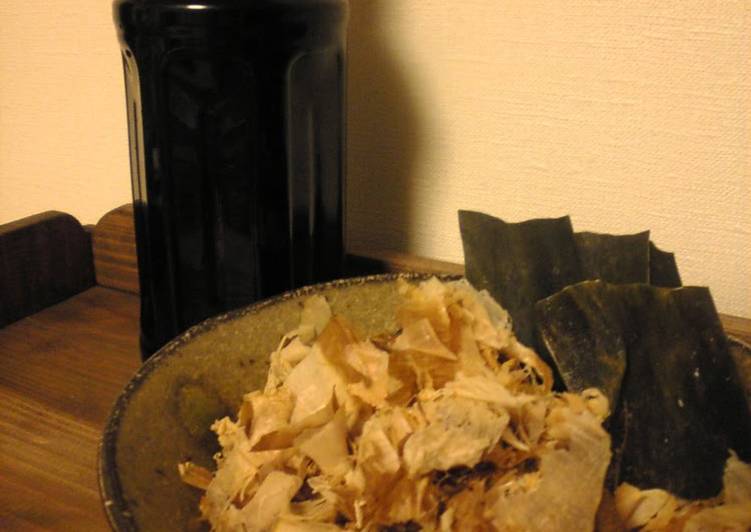
Hello everybody, hope you are having an amazing day today. Today, we’re going to make a Authentic dish, all-purpose traditional japanese sauce (dashi soy sauce). One of my favorites. This time, I will make it a little bit tasty. This is gonna smell and look delicious.
Dashi is very important in Japanese cooking. Making ichiban dashi using kombu and fish flakes(bonito flakes). Bonito is a tuna like fish.
All-Purpose Traditional Japanese Sauce (Dashi Soy Sauce) is one of the most popular of recent trending foods in the world. It’s easy, it’s quick, it tastes delicious. It is enjoyed by millions daily. All-Purpose Traditional Japanese Sauce (Dashi Soy Sauce) is something that I’ve loved my entire life. They’re fine and they look fantastic.
To get started with this recipe, we must first prepare a few components. You can cook all-purpose traditional japanese sauce (dashi soy sauce) using 6 ingredients and 4 steps. Here is how you can achieve it.
The ingredients needed to make All-Purpose Traditional Japanese Sauce (Dashi Soy Sauce):
- Make ready 300 ml Soy sauce
- Prepare 300 ml Sake
- Prepare 200 ml Mirin
- Take 20 grams Bonito flakes (about 2 big handfuls)
- Prepare 10 grams Kombu for dashi stock (about 4 to 5 10 cm x 3 cm pieces)
- Take 1 Shredded nori seaweed, white sesame seeds (for the furikake)
Use when you want a nice savory stock to go with other strong distinct flavors or seasoning like soy sauce, but don't use it. Like miso, soy sauce is a fermented and aged product. The type of soy sauce used in largely influenced by what part of the country you live in. All types of dashi impart a rich, savory taste, thanks to the naturally occurring glutamic acid in the dried ingredients the dashi stock requires.
Steps to make All-Purpose Traditional Japanese Sauce (Dashi Soy Sauce):
- Put all the ingredients except the nori seaweed and sesame seeds into a pan and turn on the heat. Once it comes to a boil, turn the heat down to low and simmer. Continue simmering for 15 to 20 minutes until the liquid has reduced by 2/3.
- Take the pan off the heat, and let cool. When it's cooled, strain it through a fine meshed sieve or paper towels. You'll end up with about 500 ml of dashi.
- How to reuse leftover bonito flakes: Spread it out on parchment paper-lined baking sheet. Bake in an oven preheated to 195-210°F/90-100°C. Around the time you've forgotten about it, it will be nicely dried (about 1 hour). P.S. Be careful not heat the oven too high, this will dry out the flakes. You can also dry-roast in a frying pan.
- Add finely shredded nori seaweed and white sesame seeds, for gorgeous, delicious bonito flake furikake! Store in an airtight container in the refrigerator. I recommend eating this with rice! It's so good!
Japanese dashi is best used on the day it's made. In the West, dashi may well be the unsung hero of Japanese cooking. The simple seaweed-based stock is And yet, despite the widespread popularity in Western kitchens of Japanese ingredients like soy When acknowledged at all, it's often treated with the same hesitancy as veal stock—something. - We have a collection of soy sauces from all over Japan. - We have a wide variety including red miso, white miso, rice miso, soy miso, and barley miso. Miso is a fermented food, made by adding salt and a starter to soybeans and grains of rice or barley and fermenting. It is one of the traditional food.
So that’s going to wrap this up with this creative food all-purpose traditional japanese sauce (dashi soy sauce) recipe. Thank you very much for reading. I am confident that you can make this at home. There is gonna be interesting food at home recipes coming up. Remember to save this page in your browser, and share it to your loved ones, colleague and friends. Thanks again for reading. Go on get cooking!

